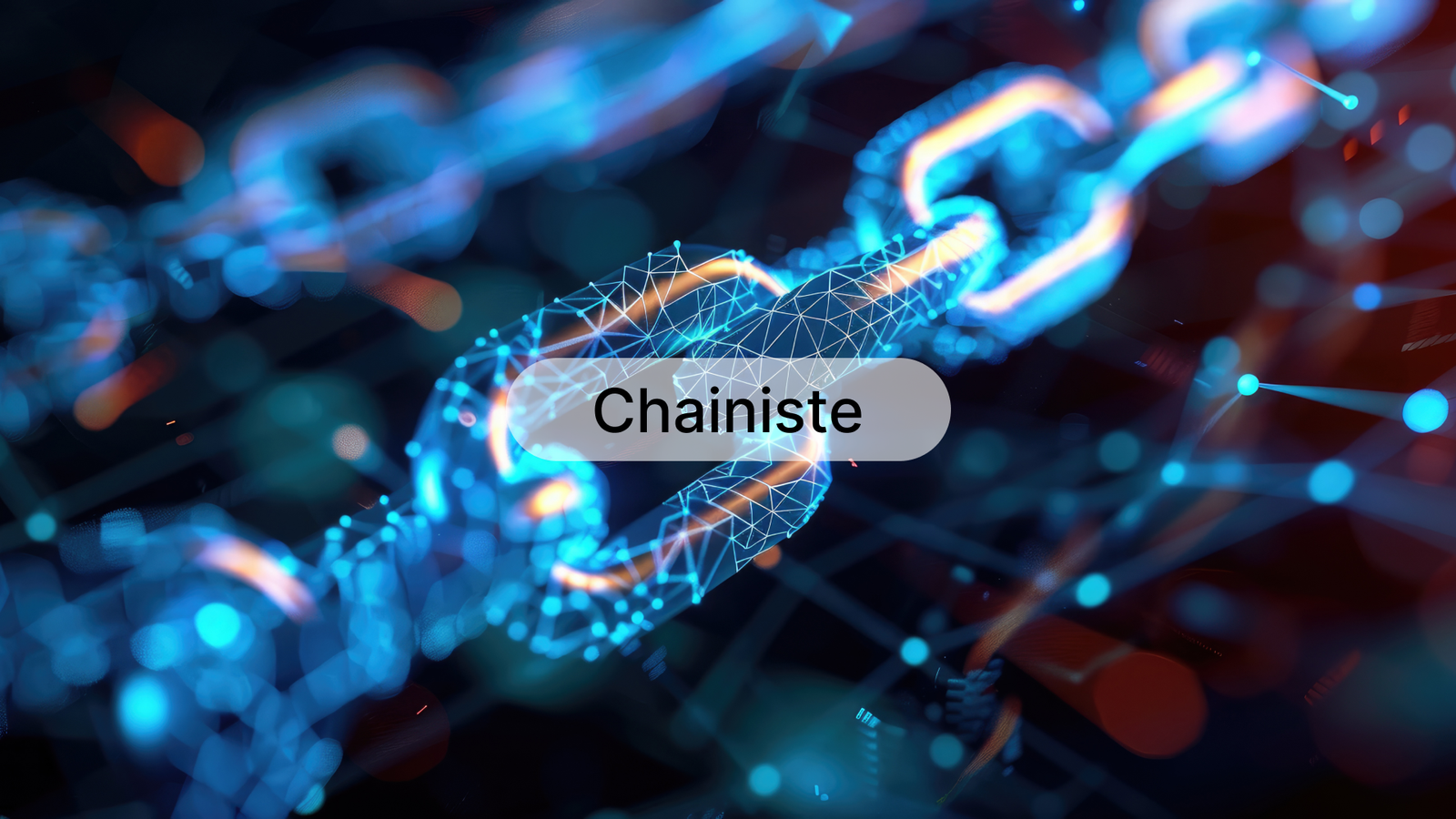Table of Contents
What is Chainiste? A Simple Explanation
Chainiste is a concept about how different parts of a system work together in a connected way. Imagine it like a team where everyone has a specific job, but they all need to cooperate to reach a common goal. In simple terms, it’s about linking different components so they can communicate and function smoothly as a whole.
For example, think about a smart home system. It includes devices like lights, thermostats, and security cameras. These devices are linked so that when you adjust the thermostat, the system can also change the settings on your lights or send you a security alert. This connected approach makes everything work better together, just like team members working together on a project.
Another way to see Chainiste in action is with your daily routine. When you follow a sequence, like getting dressed before having breakfast, you make sure each step flows into the next. If you skip steps or change the order, it might be confusing or lead to problems. This idea of following a connected process helps ensure things go smoothly and efficiently.
Chainiste isn’t just for technology; it applies to many areas of life. Whether you’re organizing an event, managing a project, or even cooking a meal, understanding how different tasks are linked can make your efforts more successful. It’s about seeing the big picture and making sure all parts of a process fit together perfectly.
In summary, Chainiste is about connecting different parts to work together effectively. By understanding and applying this concept, we can make our systems, routines, and projects run more smoothly and efficiently.
Why Chainiste Matters in Today’s World
In today’s fast-moving world, the importance of a well-connected system is greater than ever. Having a clear and organized flow of steps ensures that things run smoothly, whether in business, technology, or daily life. When each part of a process is linked to the next, it leads to better results and more efficient outcomes.
For businesses, a coordinated approach is key to staying competitive. When different departments work together seamlessly, it reduces mistakes and speeds up processes. For instance, in a factory, every stage of production must be carefully aligned. This not only saves time but also cuts down on costs and boosts overall efficiency.
In technology, integrated systems are vital for reliability. When different parts of a computer program work together in harmony, it prevents errors and ensures a smooth user experience. In our technology-driven world, where we rely on devices and software daily, having these interconnected systems in place is crucial for everything to function as expected.
On a personal level, having an organized plan can make life easier. Whether you’re managing your time, planning an event, or organizing your tasks, a clear sequence helps you stay on track. By understanding how different tasks are related, you can better manage your day and reduce stress.
In conclusion, the concept of connected systems is essential in today’s world. It helps us stay organized, work more efficiently, and achieve better outcomes. As the world becomes more complex, the need for these linked processes will only continue to grow, making them vital for success in all areas of life.
How Chainiste Works: An Easy Overview
Chainiste operates on a simple yet powerful principle: connecting different steps or parts in a sequence to create a smooth and organized flow. Imagine a chain where each link is attached to the next—this is how this concept functions in practice. By ensuring that each part of a process is linked, everything moves forward in a logical order, reducing confusion and improving efficiency.
This approach can be seen in many areas, from manufacturing to technology. In a factory, for example, every step in the production line is connected. One machine shapes a product, another assembles it, and yet another packages it. Each step is dependent on the previous one, ensuring that the end product is completed correctly and efficiently. This is a perfect example of how connected processes can streamline operations.
In technology, the same principle applies. When software is developed, different components must work together in a specific order. One part of the code might handle user input, while another processes data, and yet another displays the results. These components must be linked in a sequence to ensure the program runs smoothly without errors. This organized structure is what makes technology reliable and user-friendly.
On a smaller scale, the concept of a connected flow can be applied to everyday tasks. Whether you’re following a recipe, organizing a project, or planning your day, having each step lined up in order can make things much easier. When you know what needs to be done first, second, and third, you’re less likely to make mistakes or overlook important details.
In summary, the principle behind linked processes is about creating order and efficiency by connecting each part of a task or system. Whether in business, technology, or daily life, understanding and applying this concept can help you achieve better results with less effort. It’s a simple idea with a big impact on how we organize and manage our activities.

The Benefits of Understanding Chainiste
Understanding Chainiste offers numerous benefits that can enhance both personal and professional aspects of life. By grasping how different parts of a process connect and interact, you can achieve greater efficiency and organization. This knowledge helps streamline operations, whether you’re managing a business, working on a project, or handling daily tasks.
One major benefit is improved efficiency. When you understand how each step in a process links to the next, you can better coordinate activities and avoid redundant efforts. For instance, in a workplace setting, knowing how different departments interconnect allows for smoother workflow and faster problem-solving. This can lead to significant time and cost savings, as well as more productive outcomes.
Another advantage is enhanced problem-solving skills. By recognizing the connections between various elements of a system, you can more easily identify where issues arise and how to address them. This holistic view helps in diagnosing problems quickly and implementing effective solutions, reducing downtime and minimizing disruptions.
In personal life, understanding this connected approach can help you manage your tasks and time more effectively. When you apply this concept to daily routines, such as planning a trip or organizing a home project, it becomes easier to see what needs to be done and in what order. This leads to better organization, fewer missed details, and a smoother execution of plans.
Overall, grasping the concept of linked processes empowers you to approach tasks and challenges with a clearer strategy. It enhances your ability to organize, troubleshoot, and execute plans efficiently. Whether in your career or personal life, this understanding helps you stay on top of your goals and navigate complex processes with greater ease.
Chainiste in Everyday Life: Examples You Can Relate To
Chainiste, or the concept of connected systems, plays a significant role in our everyday lives, even if we don’t always realize it. Understanding how different parts of a process link together can make daily tasks more manageable and efficient. Here are some relatable examples of how this idea works in practice.
Consider your morning routine. From waking up to heading out the door, each step is connected. First, you brush your teeth, then you get dressed, followed by having breakfast. If you skip a step or do things out of order, it can disrupt the flow and make you feel rushed. By understanding and following this sequence, you ensure a smoother start to your day.
Another example is meal preparation. When cooking a meal, there are several steps involved—chopping vegetables, cooking the meat, and preparing the sauce. If you do these tasks in the wrong order or miss a step, the final dish might not turn out as expected. A connected approach helps in organizing these tasks so that everything comes together at the right time, resulting in a delicious meal without last-minute hassles.
Planning a vacation is another area where this concept can be applied. You need to book flights, reserve accommodation, and plan activities. Each of these tasks is linked, and missing one can affect the entire trip. By understanding how these elements connect, you can create a well-organized itinerary that ensures a smooth and enjoyable vacation.
Finally, think about managing a personal project, like redecorating a room. You start by planning the design, then you gather supplies, and finally, you do the actual decorating. Each step builds on the previous one. If you don’t follow this connected approach, you might end up with mismatched colors or missing items. Following a structured sequence helps in achieving the desired outcome efficiently.
In summary, the concept of linked processes is all around us in daily life, helping us organize tasks and manage time effectively. Recognizing how different activities are connected allows us to approach them with a clear plan, making our routines and projects more streamlined and successful.
Exploring the Future of Chainiste
As we look ahead, the future of Chainiste, or the concept of interconnected systems, promises to bring exciting advancements and improvements across various fields. With technology evolving rapidly, the way we use and understand linked processes will continue to transform, offering new opportunities and challenges. Here’s a glimpse into what the future might hold for this concept.
In the realm of technology, we can expect even more sophisticated systems that leverage interconnected processes. Artificial Intelligence (AI) and machine learning are already enhancing how different components of technology interact. For instance, smart home devices are increasingly connected, allowing for seamless integration of lighting, heating, and security systems. As these technologies advance, the ability to manage and optimize these connections will become more intuitive and efficient.
In business, the future of Chainiste will likely see even greater emphasis on automation and data integration. Companies are already using advanced software to streamline operations and improve decision-making. With the rise of big data and predictive analytics, businesses will be able to forecast trends and optimize their processes with greater accuracy. This will lead to more agile and responsive organizations, capable of adapting quickly to market changes.
On a personal level, the concept of linked processes will continue to impact how we manage our daily lives. With the growth of wearable technology and smart gadgets, individuals will have more tools to track and optimize their activities. From health monitoring to personal productivity, these connected systems will provide insights and recommendations to help people make better decisions and lead more balanced lives.
Looking further ahead, the integration of Chainiste in areas like transportation and infrastructure will revolutionize how we live and work. Concepts like smart cities and autonomous vehicles rely heavily on interconnected systems to function effectively. These advancements promise to enhance safety, efficiency, and convenience, making everyday tasks and travel more streamlined.
In summary, the future of Chainiste is bright and full of potential. As technology and systems continue to evolve, the ability to understand and utilize these connected processes will become increasingly important. Whether in business, technology, or personal life, the benefits of a well-organized and integrated approach will drive progress and innovation in the years to come.

Chainiste vs. Traditional Systems: A Comparison
When comparing Chainiste with traditional systems, it’s clear that the concept of interconnected processes offers significant advantages over older, more segmented approaches. Understanding these differences can help in appreciating how modern systems can enhance efficiency and effectiveness in various fields. Here’s a look at how this concept stacks up against traditional methods.
Traditional systems often operate in isolated segments, where each part works independently of the others. For example, in older manufacturing processes, each department might handle its tasks separately without much coordination with other departments. This can lead to inefficiencies and delays, as issues in one part of the system can affect the entire process. In contrast, Chainiste promotes a connected approach, where each step is integrated and aligned with the others. This interconnectedness helps ensure smoother operations and quicker problem-solving.
In the realm of technology, traditional systems might rely on standalone applications or devices that do not easily communicate with each other. This can result in data silos and compatibility issues, making it harder to achieve a cohesive user experience. The concept of linked processes emphasizes seamless integration between different components. For instance, modern software and smart devices are designed to work together, providing a more streamlined and user-friendly experience. This connected approach reduces friction and enhances overall functionality.
Another key difference lies in problem-solving. Traditional methods may face challenges when addressing issues because they are often compartmentalized. A problem in one area can be difficult to diagnose and fix without impacting other parts of the system. A more holistic view, such as that provided by Chainiste, makes it easier to identify and resolve problems by understanding how different components are linked. This can lead to faster resolutions and less disruption.
On a personal level, traditional methods of managing tasks or projects can be less organized, often relying on manual processes and disjointed tools. The concept of linked processes promotes a more structured approach, where tasks are planned and executed in a connected sequence. This not only improves efficiency but also reduces the likelihood of missing important steps or details.
In summary, while traditional systems have their merits, the interconnected approach offered by Chainiste provides clear advantages in terms of efficiency, problem-solving, and user experience. By understanding and leveraging these modern, integrated processes, individuals and organizations can achieve better results and more streamlined operations.
Common Misunderstandings About Chainiste
Chainiste, or the concept of interconnected processes, is often misunderstood in various ways. These misconceptions can lead to confusion about how it works and its benefits. Here are some common misunderstandings and clarifications about this idea.
One frequent misunderstanding is that Chainiste is only applicable to complex systems. People sometimes think it only works in large-scale operations like manufacturing or technology. In reality, the principle of connected processes is valuable in many contexts, including everyday activities and small projects. Whether you’re organizing a home renovation or planning a simple event, understanding how different tasks connect can lead to better results.
Another misconception is that Chainiste requires advanced technology or tools to be effective. Some believe that only high-tech solutions can benefit from this approach. However, the essence of interconnected processes is about organizing and linking steps logically. This can be achieved with basic tools and methods. For instance, a well-organized to-do list or a simple workflow diagram can apply the same principles to manage tasks effectively.
A common belief is that interconnected systems are inflexible and hard to adapt. Some people think that once a process is set up, it cannot be changed without causing disruptions. In fact, the concept of linked processes is about creating a flexible structure where changes can be smoothly integrated. The connected nature of the process allows for adjustments and improvements without major disruptions.
Another misunderstanding is that Chainiste is synonymous with rigid planning and lack of creativity. People might think that following a structured sequence leaves no room for innovation. On the contrary, having a clear understanding of how different elements are linked can actually foster creativity. It provides a solid foundation on which new ideas can be built and tested, allowing for both order and innovation.
In summary, the concept of linked processes is a versatile tool that applies to a wide range of activities, does not require advanced technology, and is adaptable to changes. Understanding these aspects can help clarify how interconnected processes can be used effectively, whether in complex systems or everyday tasks.
The Role of Chainiste in Technology
Chainiste, or the principle of interconnected systems, plays a significant role in the field of technology, transforming how we interact with and use various tech tools. Understanding how this concept is applied can highlight its importance and the benefits it offers. Here’s an overview of how interconnected systems influence modern technology.
In the world of technology, one of the most notable applications of interconnected systems is in the development of smart devices. These devices, such as smartphones, smartwatches, and home automation systems, rely on a network of components that communicate with each other. For example, smart home systems link devices like thermostats, lights, and security cameras, allowing them to work together seamlessly. This integration enhances convenience and control, demonstrating the power of connected technology in our daily lives.
Another area where this concept is crucial is in cloud computing. Cloud services operate on a network of servers that are interconnected to provide storage, processing power, and applications over the internet. This allows users to access data and applications from anywhere in the world, as long as they have an internet connection. The ability of these systems to work together efficiently underpins the flexibility and scalability of cloud services, making them a key component of modern technology.
In software development, the concept of linked processes is also prominent. Modern software applications often consist of various modules or services that must interact smoothly to function correctly. For instance, a customer relationship management (CRM) system might integrate with email, marketing tools, and data analytics platforms. This integration ensures that all parts of the system work together harmoniously, providing a comprehensive solution that improves efficiency and user experience.
Additionally, technology-driven industries such as telecommunications and transportation benefit greatly from interconnected systems. In telecommunications, networks of servers, cables, and satellites must operate together to provide seamless communication services. In transportation, interconnected systems in vehicles and infrastructure enable features like navigation, traffic management, and autonomous driving. These applications showcase how interconnected systems enhance functionality and drive innovation in various technological fields.
In summary, Chainiste plays a vital role in technology by enabling seamless integration and communication between different components. This interconnected approach enhances the functionality, flexibility, and user experience of modern tech tools and systems. Understanding its impact highlights the importance of connected processes in driving technological advancements and improving our daily lives.

How to Get Started with Chainiste
Getting started with Chainiste is easy, even if you’re new to the concept. The first step is to identify a process or task that you want to organize or improve. This could be something simple, like planning a project, or something more complex, like managing a business operation.
Once you’ve identified the task, break it down into smaller steps. Think about how each step connects to the next, and how they all come together to form the final outcome. This is the core of Chainiste – understanding the connections between each part of the process.
Next, start putting the steps into action. Follow the sequence you’ve created, making sure that each step is completed before moving on to the next. As you go through the process, you’ll see how Chainiste helps everything flow more smoothly and efficiently.
Chainiste and Its Impact on Society
Chainiste has a significant impact on society, helping to improve the way we live and work. By connecting different parts of a process, Chainiste makes it easier to manage complex tasks and achieve better results.
In the business world, for example, Chainiste helps companies operate more efficiently, leading to higher productivity and better products or services. This, in turn, benefits consumers, who receive better quality and value for their money.
In our personal lives, Chainiste can help us stay organized and achieve our goals more easily. Whether it’s managing our time, planning a project, or learning a new skill, Chainiste provides a clear and connected path to success. This positive impact can lead to a more organized and fulfilling life, where we’re better able to manage the challenges and opportunities that come our way.
The Evolution of Chainiste: From Then to Now
Chainiste has evolved over time, becoming an increasingly important concept in our modern world. In the past, processes and systems were often disconnected, with little communication or coordination between different parts. This made it difficult to achieve smooth and efficient outcomes.
As technology and society have advanced, the need for more connected and organized systems has grown. Chainiste has emerged as a solution to this need, providing a way to link different parts of a process together in a seamless flow. This evolution has led to more efficient and reliable systems, both in business and in everyday life.
Today, Chainiste is used in a wide range of areas, from technology to personal organization. As we continue to face new challenges and opportunities, the importance of Chainiste is likely to grow even further. By understanding and applying the principles of Chainiste, we can stay ahead of the curve and continue to achieve success in an increasingly complex world.
Conclusion
In conclusion, Chainiste, or interconnected systems, is an important idea that helps make technology work better. By linking different parts together, it allows our devices and applications to operate smoothly and efficiently. Whether it’s smart home gadgets talking to each other or cloud services making data accessible from anywhere, connected systems make our lives easier and more convenient.
Understanding how Chainiste works can also help us see the benefits of being organized and connected in other areas. From managing daily tasks to handling big projects, knowing how different parts fit together can lead to better results and less stress. Embracing this idea can help us improve how we use technology and make our daily routines run more smoothly.

